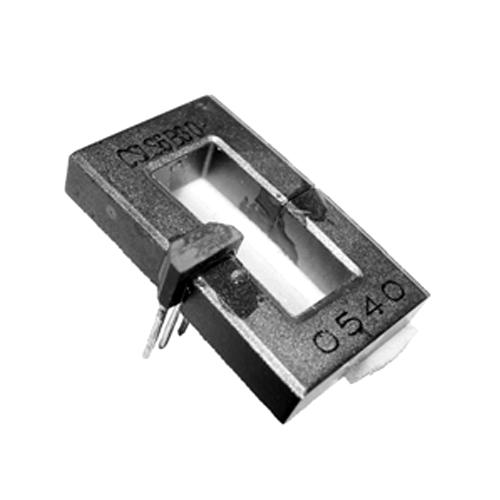Current sensors mainly use the principles of electromagnetic induction and the Hall effect to detect and measure the current flowing through a conductor and convert it into a corresponding proportional output signal (such as voltage, current, or digital signal).
The following are common types of current sensors:
Resistor Shunt
The resistor shunt connects a precision low-resistance shunt resistor in series with the current path. When current passes through, according to Ohm's law, V = IR. The voltage is proportional to the current. By measuring the voltage value, the magnitude of the current can be known. The advantages of the resistor shunt include high accuracy, fast response speed, low cost, and ease of use. However, its disadvantage is that the device itself does not have an electrical isolation function and is not suitable for measuring large currents and high-frequency alternating currents.
Current Transformer
A current transformer is a device that works on the principle of electromagnetic induction. It can convert a large current on one side into a small current on the other side for current measurement and protection. The primary winding of the current transformer has a small number of turns and a thick wire diameter. It needs to be connected in series in the circuit of the current to be measured, and the secondary side cannot be open. The advantage of the current transformer is that it has an electrical isolation function, but the disadvantage is that it can only be used to measure alternating current.
Hall Effect Current Sensor
The Hall current sensor is a device that uses the hall effect to measure current. Its working principle is to detect the magnetic field generated when current flows through a conductor, and then convert the magnetic field into a voltage signal proportional to the current. It includes open-loop Hall current sensors and closed-loop hall current sensors.
Open-loop Hall Effect Current Sensor
The primary current is measured through the magnetic field in the toroidal core, and the output is amplified and output. The output voltage is proportional to the primary current. The CSLS Series is a good miniature Hall effect linear open-loop current sensor.
Closed-loop Hall Effect Current Sensor
After amplifying the output voltage of the Hall device, the magnetic field generated by the compensation coil is offset by the magnetic field generated by the measured current, so that the Hall device works in a zero flux state.
Fluxgate Current Sensor
The working principle of the fluxgate current sensor is based on the law of electromagnetic induction, and the current size is indirectly measured by detecting the change in the magnetic field generated by the current. It has the characteristics of high sensitivity, good linearity, and strong anti-interference ability.
Rogowski Coil Current Transformer
The Rogowski coil, also known as the magnetic potential meter, is based on Faraday's law of electromagnetic induction, and detects the magnetic field generated by the current change and converts it into a voltage signal. It supports high-precision, wide-band current measurement, and is particularly suitable for high current and pulse current scenarios.
OFweek Mall supplies current and voltage sensors with complete specifications. Hall effect current sensors, current transformers, and power sensors are all available at wholesale prices. Welcome to the store to consult!
Related Articles
Digital Audio Amplifier Purchase Guide?
OFweek Mall Supplies a Wide Variety of Class D Audio Amplifiers



没有评论:
发表评论